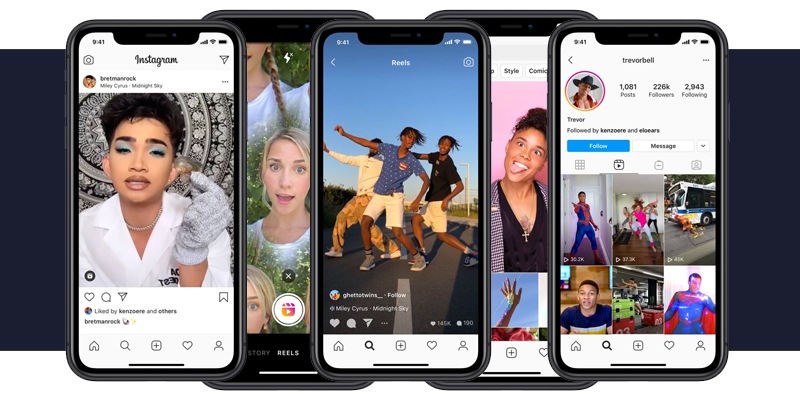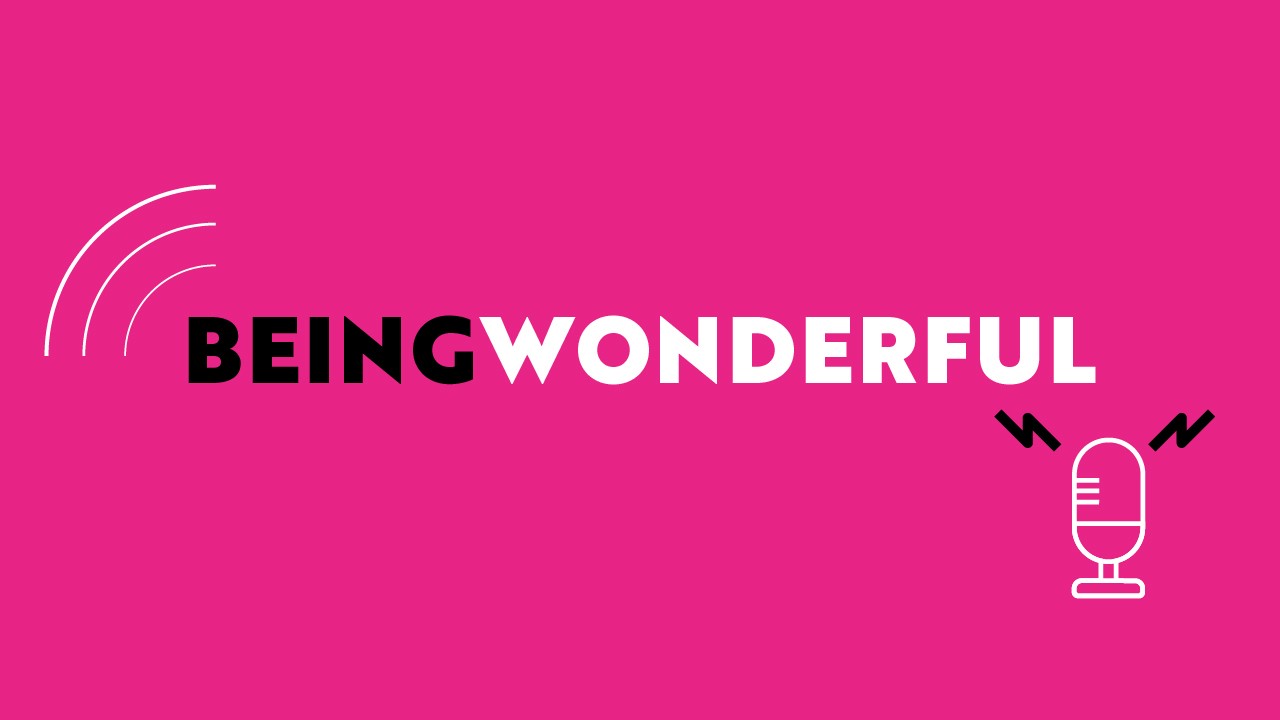
You! Hey, you! Yeah, you! Over here…! Right, now that I’ve got your attention, I need to keep it. ATTENTION! A bit longer. A few seconds more. Ok. Are you on board? Cool. Let’s get into this, before you become distracted by the next big, shiny thing! How on earth can marketers adapt to the ever diminishing attention spans of today’s digital audience?
Excuse the rather ‘desperate’ opening, but now more than ever before, your attention is the vital ingredient to kick-starting your journey with us, including reading more of this article.
Since the rapid, exponential growth of digital and device usage in the past 20 years or so, researchers have suspected that the ‘information age’ has had a profound effect on the general attention span of humans.
Your attention span is lower than that of a Goldfish
It appears that evidence is now available to support this case, as a 2020 study by Microsoft indicated that people now generally start to lose concentration after just eight seconds. 8 seconds! EIGHT! This figure has been in decline over a number of years and is now at an all-time low. In fact, the study shows that human attention spans were around 12 seconds in 2000, dropping consistently to the 8 seconds we see today.
Marketers have historically quipped about the attention span of users being akin to Goldfish (in fact even your parents will have joked about this) – well, now this evidence actually means the joke is on us, because we’re a full 1 second behind our aquatic friends.
Ok, truth time. The robustness of this argument actually falls down a little when you dissect the research and go deeper into the rabbit hole. Firstly, “attention span” is not something we can easily make an apples-to-apples comparison with (especially versus a goldfish)! This 2020 study is also actually a re-hashing of a 2015 study and it came out of one of Microsoft’s smaller Canadian centres, one which works on their advertising arm (make of that what you will).
The study isn’t founded on particularly scientific (or even peer-reviewed) findings, plus, the definition of “attention span” can mean different things. Does it mean:
- Sustained attention to a task, like watching a film or reading a book?
- Shifting attention, like browsing your social media feeds? Or;
- Focussed attention, the ability to block out distractions?
Other studies have purported to evidence similar findings – one of the most recent of which found that the collective attention span of people across the globe has been narrowing over the years. The study also highlighted the effects of an increasingly digital lifestyle on our brains, concluding that high levels of internet use can impact many different functions of the brain. One specific example given is the impact of the high volume of prompts and notifications which encourage us to constantly hold divided attention, in turn, decreasing our capacity to maintain concentration on single tasks.
This report also demonstrated that individuals who spent more time flipping between short activities on the internet required “greater and greater cognitive effort in order to maintain that same level of focus and concentration”.
Content is increasing in volume which exhausts our attention and our urge for ‘newness’ causes us to collectively switch between topics more regularly.
Interestingly, those that were affected by this showed “less grey matter in cerebral areas associated with maintaining focus”, culminating in an immediate impact on a person’s ability to maintain their attention on any activity.
In fact, these theories have been voiced as far back as 2002, when MIT researcher Ted Selker reported: “our attention span gets affected by the way we do things. If we spend our time flitting from one thing to another on the web, we can get into a habit of not concentrating.”
Despite some flaws, these studies do all have at least some evidential founding – hopefully this evidence has helped us to maintain your attention.
In addition to all of this, there are countless reports of the new ‘instant gratification’ generation being created by the digital revolution. Endorphin hits from social “likes”; next-day delivery via eCommerce; understanding complex topics after a quick ‘Google’ to win an argument in the pub (remember pubs?). All of this has shifted user’s expectations of interaction with brands online.
The proof of the pudding.
Regardless of the holes in some of the research available, what can be said for certain is that our attention is now fought-over more than ever, particularly our short-term attention, and the existence of certain social media platforms and updates to more established ones are testament to the ‘attention’ trend. Here’s some examples of platform & channel evolution that has taken advantage of this trend:
TIKTOK:
The pinnacle of short-term attention grabbing content, if you ever used ‘Vine’, then you should be familiar with TikTok (the artist formerly known as ‘Musical.ly’). Users create short 15-60 second videos that are shared between users. The platform started with videos of people lip-syncing to popular music videos, but as with all platforms, users evolved it’s application and eventually it grew to a new place for influencers to upload creative content.

Typically, ‘TikToks’ are up to 15 seconds long, but users have the ability to stitch together multiple clips with an array of effects and transitions, creating a video that is up to 60 seconds in total.
In an effort to compete with some of the other popular social platforms, going ‘Live’/streaming is also an option, similar to Instagram and Facebook. IN addition to the effects and transitions, filters can also be applied, and music content is less-restricted (by copyright et al) making it more popular in terms of usage trends. In addition, as COVID-19 made its entrance, TikTok usage increased exponentially. In fact, TikTok’s ability to fuse music and dance at its roots has manifested itself in Top 40 hits evolving from the platform, including Jason Derulo’s Savage Love, which even features a compilation of TikTok clips in it’s official music video.
INSTAGRAM REELS:
Instagram was the platform of choice for quick (and endless) scrolling through easy-to-digest photos and video clips for a number of years until TikTok came along and stole the attention of over 70 million users.
In an effort to combat this, Instagram introduced Reels. In their own words: ‘Reels invites you to create fun videos to share with your friends or anyone on Instagram. Record and edit 15-second multi-clip videos with audio, effects, and new creative tools. You can share reels with your followers on Feed, and, if you have a public account, make them available to the wider Instagram community through a new space in Explore. Reels in Explore offers anyone the chance to become a creator on Instagram and reach new audiences on a global stage.’ Sound familiar?

Facebook (who owns Instagram) has had varying levels of success copying other social networks. Instagram Stories did pretty well at cloning Snapchat, with Stories catching up to Snap’s audience size in less than six months.
The main challenge here is that TikTok had already sewn up this type of content, and what has actually manifested is users treating Reels as a ‘reposting’ platform for TikTok. A challenge Instagram are working on overcoming, but perhaps an example of platforms’ need to ‘stay in their lane’ when it comes to these new short-form content types (user:format fit).
A benefit of Instagram Reels for brands already using the platform is that their audience is likely to already be defined and a following established. This, coupled with Instagram’s algorithm favouring this new format, could lead to some considerable attention grabbing opportunities, provided the content created is hyper-engaging within those first vital 8 seconds
YOUTUBE CLIPS:
This is VERY new news – YouTube is rolling out a new short-form video sharing feature called ‘YouTube Clips’. With this new feature, users can clip out, assign a title and share 5-60 second clips from an existing video or live stream. This comes after YouTube trialled ‘YouTube Shorts’ in India to test the water of the short-form video format and to try and compete with the likes of Reels and TikTok.
Much like TikTok and Reels, the clip plays on loop on the existing watch page once a viewer views them. The monetisation settings of the original video will still apply, and it could be useful for live streamers in keeping users on their channels. The new feature has been focussed mainly on Gaming, which has continued to be a valuable source of content and income for the platform. “Clips” is going to be a useful feature to share snippets of content, not just for gamers but for all kinds of content creators to share quick, interesting moments from their videos.
In the same way Instagram’s Reels often ends up being predominantly populated with rehashed content from TikTok, YouTube’s ‘Clips’ will be used to share to other social channels and ultimately tease users over to the original piece of content from which the ‘clip’ was created.
Watch the video where this was revealed here:
This feature is currently in beta, and is only available to a small number of gaming channels. Users can only find this feature when on desktop or Android device until the feature is further along in development. Despite all this, if this makes it to full release, it will certainly be a channel to consider – especially when you consider that YouTube is the world’s second largest search engine (it is Google-based, after all).
There’s clearly an appetite for short-form content as the majority of the big players are all investing heavily in solutions vying for our increasingly short attention spans. This market shift, coupled with the (admittedly hole-laden) research, means it is fair to conclude that what marketers actually need to navigate is how to grab your valuable attention, aka take advantage of Shifting Attention; and look at ways to maintain it through Sustained Attention and Focus. This is where the challenges truly arise.
How to market to Goldfish.
Taking advantage of these new, updated channels represents an opportunity to win customer’s attention early on in their buying journey and, more importantly, stop the competition getting their attention first.
YouTube’s move into turning existing content into more ‘snackable’ format plays straight into the hands of those marketers looking to leverage this short attention span, but who’s native content lives in longer-form. Just as we’d recommend videos and articles are broken down into shorter, more digestible formats for social channels, teasing people to engage with the longer-form content where applicable, YouTube’s new Clips format will drive users back to the original content where the real stories are told. (It’s no coincidence most successful YouTubers have a 10 second intro summary of what’s coming up, or show a ‘best bit’ from the main video at the beginning of their main channel content).
What is important to note here is that, although grabbing attention can be achieved through these short-form, quick-fire content types, not all users are in the Goldfish frame of mind all of the time. Pragmatic marketers will understand how to market to goldfish, but also how to nurture this into longer-form attention and, ultimately, engagement.
Storytelling is still absolutely key. It’s just that the ‘Once Upon a Time’ now needs to be just as impactful as the main action, if not more-so, if we’re ever going to make it to the ‘Happily Ever After’.
With Valentine’s Day just gone by, it would be remiss of us not to use this as the basis of an analogy: In the same way aspiring would-be Valentine’s use an attention-grabbing gesture to capture the attention of their prospective partner, it is not this that seals the deal. Whilst the attention is grabbed in the short-term, it is the work that goes into the continued relationship that truly enables it to blossom and become fruitful for both parties.
It is important to note that not all Goldfish are the same – you may be reading this thinking “TikTok really isn’t for us” and, you may well be right. But not necessarily because you’ve decided short-form attention grabbing isn’t for you; more-so that your target audience rarely (if ever) uses the platform. And that’s ok. What we’re recommending here is a consideration for the new shorter attention span, not an instant migration to TikTok or Reels in a bandwagon-hopping attempt to tick a box.
You don’t have to go to TikTok, Reels, Clips or any other of these platforms, but what you should certainly consider is ensuring you cut through the noise. As an action, could you:
- Make your PPC ads & assets more eye-catching?
- Make your copy snappier, more engaging?
- Make your social posts more ‘snackable’ to leave people wanting more?
- Hit users with the ‘headlines’ at the start of your longer form content?
(If you’re not sure, feel free to get in touch to discuss how our creative digital agency might be able to help).
See, you’re not ALWAYS distracted:
If you’ve made it to this conclusion, you’ll have some level of understanding that not all attention is short-lived. We may have piqued your short-term attention and interest via a post or quip on social media, but we’ve managed to keep you engaged just long enough for you to read the rest of this article for a few minutes. Maybe now you’d like to find out more about how we apply some of this thinking across our Digital Marketing campaigns or perhaps how we measure the success of our work, for example.
It is important to understand the trends explored in this article, but even more important to understand that marketers should not focus all their attention on just winning that short-term attention, but to bringing value to users (like you) through interesting and engaging content of varying types.
A joined-up digital strategy will look to take advantage of the attention-grabbing we’ve outlined here, but leverage this for longer term relationships, helping users become aware of what you do and how you solve their problems with your products and services; through to considered understanding and the opportunity to demonstrate a return on investment; through to measurable delivery and success; ultimately culminating in advocacy.
One TikTok might not achieve all of this for your business, but it might just be the start of the journey you’ve been missing…
If you’d like to discuss the challenges your business is currently facing, and explore the Wonderfully simple solutions, get in touch or book a call with one of our experts.
Latest posts

5 reasons why we still need Wonder in an AI driven world
As an agency, we are grappling with the role and application of AI within our daily business activities, our client offering, and our future growth

The Power of Purpose and Impact on Business Growth
In a marketplace increasingly driven by values and social consciousness, the role of purpose and impact in business growth has never been more critical.

Three key benefits of integrating a sense of Wonder within your brand & marketing strategies
We love creating Wonder. It’s our passion and forms our client mission. However, in an age where your customers and clients are bombarded with constant information and countless choices, capturing attention and building lasting connections has become increasingly challenging. We all have to work harder to capture people’s attention.